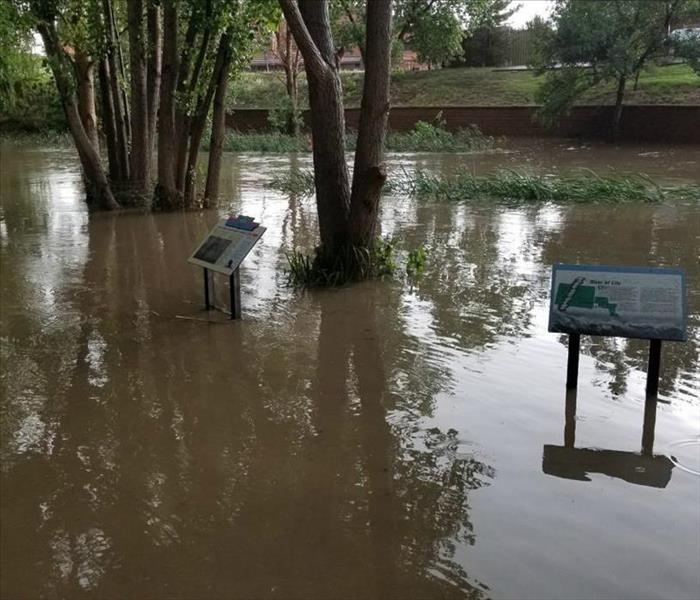3 Things to Avoid After a Flood
3/26/2020 (Permalink)
If you have standing water from a recent flood, your business is susceptible to various types of infestation. The three most common and most damaging factors that affect flooded facilities are the following:
• Insects
• Bacteria
• Mold growth
Bugs
Insects are important to the ecosystem, but you do not want a whole ecosystem growing throughout your business. Most of the peskiest bugs out there love it when your building has a flood. That's because some of them lay eggs in stagnant water and others enjoy dining on the building materials that have been softened up by moisture. Getting rid of the water as soon as possible is a priority if you want to avoid turning your facility into a swarm of insects.
Bacteria
Warm weather flooding provides a breeding ground for disease. Even if the water source is clean, it is unlikely that every object the floodwater comes into contact with is disinfected. Furthermore, organic materials start to dissolve in water very quickly, providing a solution that becomes a food source for disease-causing bacteria. A good flood recovery company will come armed with antiseptics for this reason.
Black Mold
Mold growth starts rapidly when water is present in a building. It can take as little as 24 hours for the first spores to start multiplying. This is because even in the most pristine buildings, the mold is already present. All it needs is a high level of moisture to get started multiplying and taking over the walls, ceilings and furnishings of your business. This is what makes mold one of the most common secondary sources of loss in businesses that experience flooding.
Insects, diseases and mold growth form a triad of secondary problems that can end up costing you a fortune to clean. Make sure that your water damage is taken care of correctly, and your facility is thoroughly dried, and you will minimize the risk of having issues in the future.




 24/7 Emergency Service
24/7 Emergency Service
